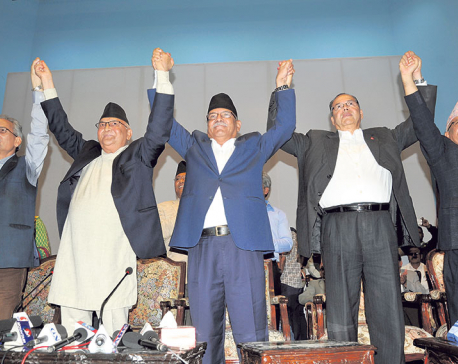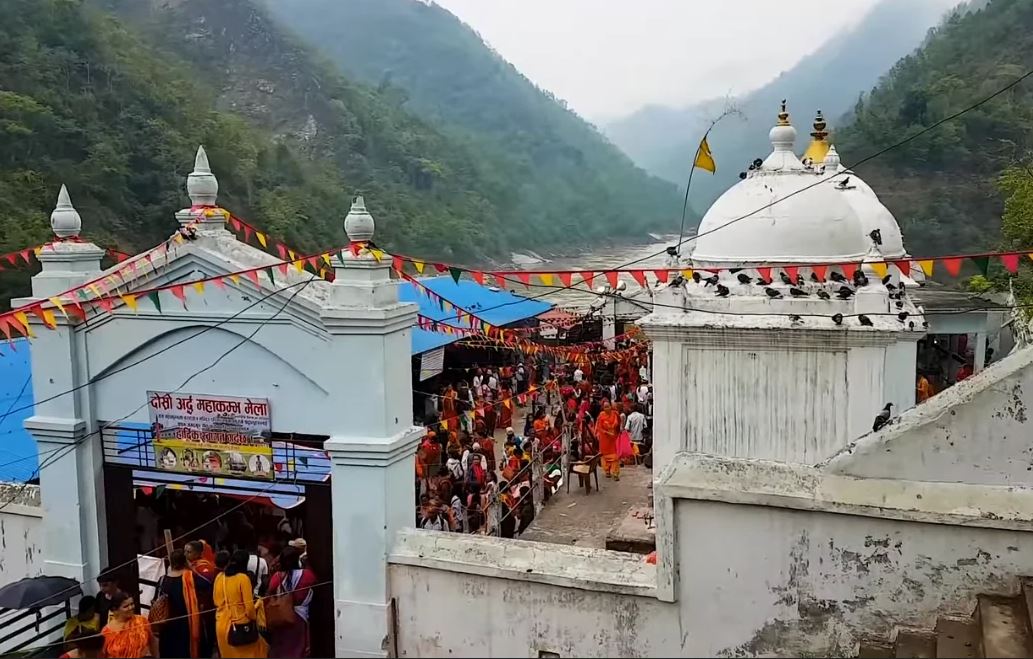
OR
Armed criminal groups
The decade-long Maoist insurgency, many believe, legitimized the use of violence in Nepali society. There is some evidence to support this theory. After the warring Maoists were successfully mainstreamed with the signing of the Comprehensive Peace Agreement in 2006, a spate of small armed groups sprang up around the country, both up in the hills and down in the Tarai plains. If the Maoists were being ‘rewarded’ for the loss of 17,000 lives with parliamentary seats and other perks, these groups must have felt that they too could blackmail the Nepali state. The other option was to shake down the rich industrialists and businessmen under various political covers. The number of such criminal-minded armed groups had risen exponentially following the mainstreaming of Maoists. Over the past one decade, there has been a concerted effort by the police to crack down on these criminal groups, and most of them have been disbanded. But there is still no shortage of criminal-minded folks who band together under the flags of obscure political parties in order to carry out their criminal activities.
Around a month ago some disgruntled former Maoist fighters—the supposed cadres of ‘Akhil Rastriya Swatantra Bidhyarthi Kendra’ and ‘Young Communist Force Nepal’—had planted bombs in eight private schools in Kathmandu after these schools refused them the hefty donations. Nepal Police has now uncovered the activities of another armed outfit identified as ‘Mongol Mulbasi Rastriya Force’ following the arrest of one of its members from Bhaktapur last week. Within days of this arrest, the police arrested 12 others from Bhaktapur, Sindhupalchowk and Rolpa districts along with various arms and ammunition.
In the course of their investigation, police found that the group had been planning terror attacks, lootings and ransom collection. Most troubling was the revelation that the outfit also had a military wing named Mongol National Army, which, inspired by the modus operandi of former Maoist fighters, were planning to collect weapons by attacking police posts and finance themselves by looting financial institutions. Thankfully, our police force now has a long experience of dealing with these criminal groups and in most cases is successful in foiling their devious plots. The surveillance and intelligence-gathering capabilities of Nepal Police have also vastly improved.
But the routine uncovering of one or the other of these criminal groups also highlights the importance of constant vigilance. Since most of these groups can be linked to former Maoist fighters who were disqualified by the UN, it also seems like not enough has been done to rehabilitate them back in the society. It was dangerous to leave thousands of youngsters who claimed allegiance to the mother Maoist party to fend for themselves.
Many were socially ostracized and blamed for the violence of their former party. Nor did they have employable skills with which they could earn their daily bread. So along with tightening the screws on these criminal groups, it might be a worthwhile idea to work out the real number of disqualified combatants and train them on small jobs. Treating this as a purely law and order problem is a tempting option. But one that could easily backfire, as the Nepali state found out when it tried to suppress the incipient Maoists with brute force back in 1996.
You May Like This

Old wine, old bottle
Last week, a grand coalition of all the leftist parties of Nepal was announced, much to the surprise of not... Read More...

Hundred years old Bhaktapur Hospital old and infirm
BHAKTAPUR, July 18: It is the country's second oldest hospital and, as its age, is frail and lacks the required... Read More...

Old habits
Our parliamentarians are giving a dreadful account of themselves with their notorious record of absenteeism. On Sunday, fed up... Read More...

Just In
- Over 200,000 devotees throng Maha Kumbha Mela at Barahakshetra
- Indians vote in the first phase of the world’s largest election as Modi seeks a third term
- Kushal Dixit selected for London Marathon
- Nepal faces Hong Kong today for ACC Emerging Teams Asia Cup
- 286 new industries registered in Nepal in first nine months of current FY, attracting Rs 165 billion investment
- UML's National Convention Representatives Council meeting today
- Gandaki Province CM assigns ministerial portfolios to Hari Bahadur Chuman and Deepak Manange
- 352 climbers obtain permits to ascend Mount Everest this season






_20220508065243.jpg)











Leave A Comment